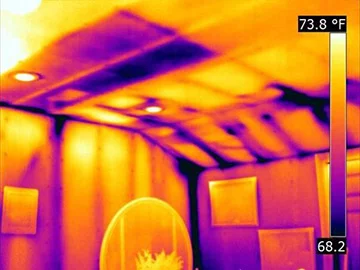Using IR Inspections to Help Prepare for Heating Season
Sponsored by:

Tip written by: Infraspection Institute
For many facilities the beginning of autumn means that heating season is just around the corner. Infrared inspections can help point out the types of energy liabilities that can account for significant waste.

With energy costs at an all time high, energy conservation is more important than ever. With companies looking for ways to contain costs, energy conservation makes sense. When properly conducted, infrared inspections can point out areas of thermal deficiencies or energy loss. When coupled with timely, effective repairs, considerable savings can be realized.
There are many areas where infrared inspections may be performed to help detect excess energy loss. Among the most common are:
- Building envelopes – for missing or damaged insulation and air leakage
- Flat roofs – to detect water damaged insulation
- Steam systems – to detect defective steam traps
- Underground piping – to detect pipe leaks
- Boilers and process equipment – to detect excess energy loss or air leaks
When it comes to the above inspections, time is of the essence in order to maximize savings. Infrared inspections should be carried out as soon as possible. Waiting until the heating season is well under way often results in documenting opportunity lost rather than savings realized.
Infrared inspection of building envelopes and thermal energy delivery systems are two of the many topics covered in the Infraspection Institute Level I Certified Infrared Thermographer® training course. This same information is also covered in our Distance Learning Level I Thermography course. For more information or to register for a course, visit Infraspection Institute or call us at 609-239-4788.

